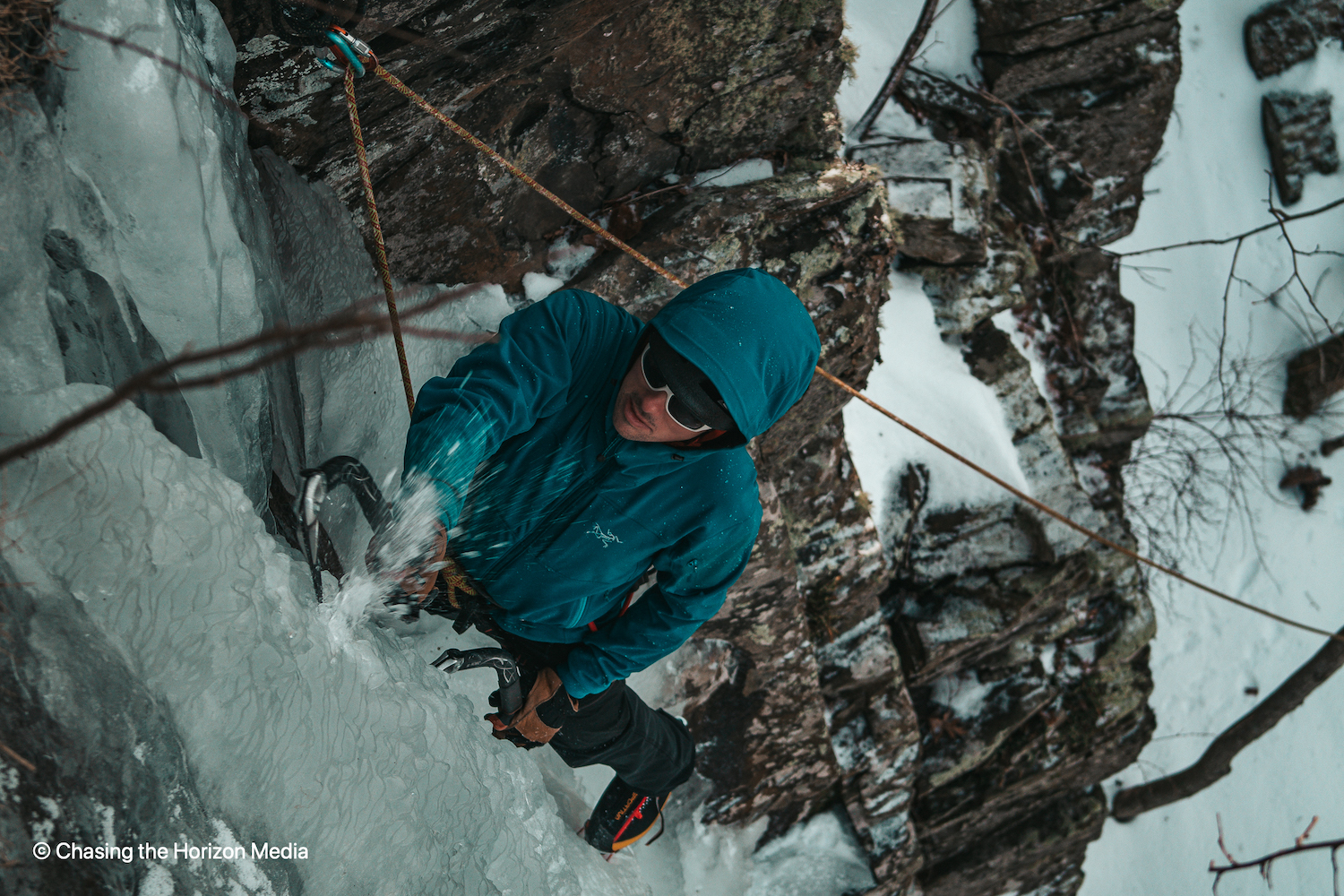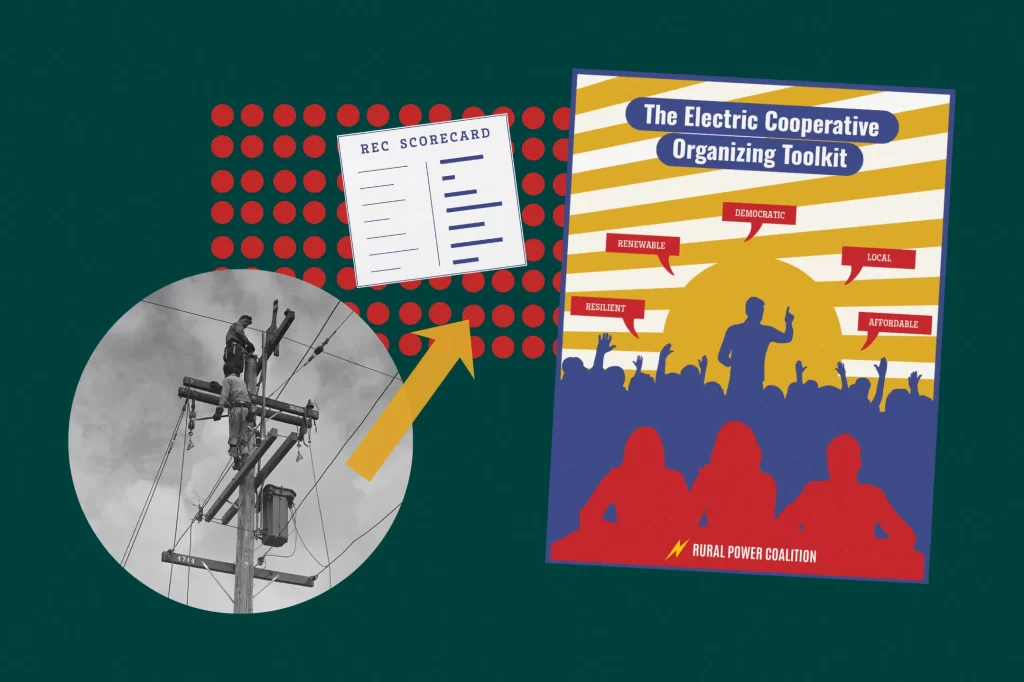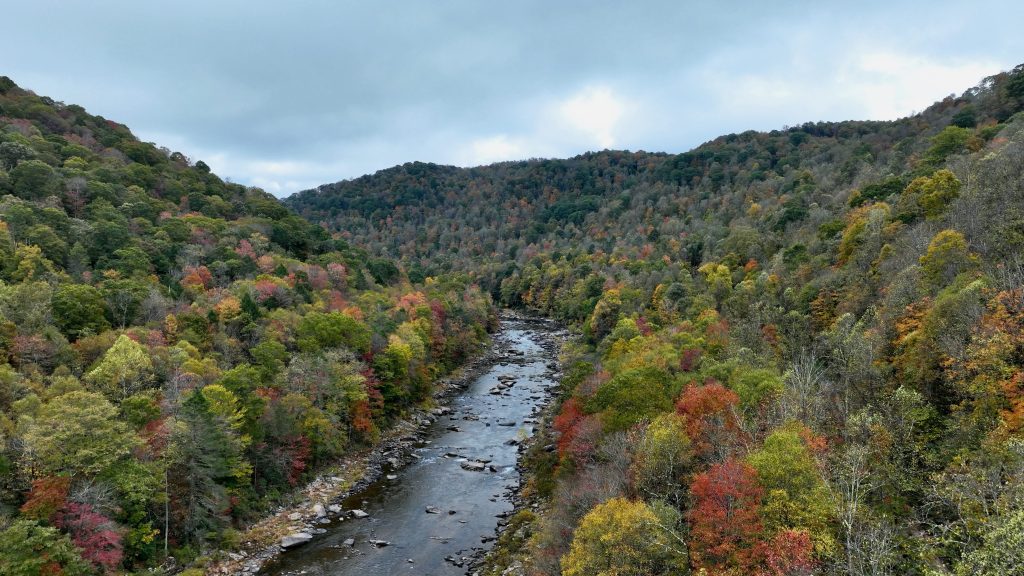Dreamers: Ice climbing in the Southeast

Chad Jackabon works his way up a column of ice. Climbers use ice tools in their hands and crampons on their feet to gain purchase in the ice. Photo by Dylan Walton, Chasing The Horizon Media.
By Dylan Walton
“Have you seen the forecast for the next week? I think by Wednesday it’s going to be in!”
These are the first words I hear when I pick up the phone on a January afternoon. The voice on the other end of the line is my fellow climbing guide and good friend Grant Price. Grant and I both make our living taking people climbing, which given that we live in Appalachia, means we spend most of our time climbing on rock.
However, we both belong to a bit of a rare and strange group in the region that loves to climb frozen waterfalls, an activity also known as ice climbing. In the world of ice climbing, “in” is the magic word. When a fellow ice climber says that a climb is “in,” they are saying that conditions are prime and ice has formed from the top of the cliff to the bottom, creating a hanging curtain sturdy enough to climb.
In many parts of the world, the climbing season for ice is several months long. But in the Southeast, the ice season, if you can actually call it that, can be merely a few days. Climbers call it “taking their ice tools for a walk” as they hike through the hills searching for a shaded hollow with the perfect combination of foliage to block the sunlight and running water over cliff edges that will freeze into curtains of ice when the temperature drops.
They say that all good stories begin and end in the heart of a dreamer, and that is particularly true of ice climbing stories in this part of the world. It takes a dreamer to wander into the woods off-trail, bushwhacking through dense thickets in sub-freezing weather to look for ice in a place that is geographically not well suited for it. Add to that the ever-present effects of climate change raising average temperatures, and it seems a fool’s errand to even try. But the cool thing about dreams is that, every once in a while, the stars align and they come true. That’s what keeps us coming back.
Grant, who is one of the most laconic and analytical people I know, is a wizard at tracking the weather patterns and predicting when there will be climbable ice, so his out-of-character greeting sets me scrambling for my computer to confirm what he is telling me. What I see makes me smile as the 10-day forecast indicates single-digit nights coupled with overcast days barely breaking into the teens for the foreseeable future. Most people groan at those temperatures; ice climbers love it. Beauty is in the eye of the beholder, I suppose.

Grant Price leads the way with Chad Jackabon close behind. Often, skiing is the most efficient way to get to the climbing areas after a big snow. Photo by Dylan Walton, Chasing The Horizon Media
On a frigid Wednesday morning, Grant, me and another of our friends and fellow guides named Chad Jackabon gather in the parking lot of a business near Wintergreen, Virginia. Ostensibly, we are having a scouting and training day to check on ice conditions and dial in our systems for the clients we will be guiding and teaching over the next few days, but in reality we are all stoked to climb some ice. The three of us are lucky enough to have jobs that require us to go out and climb when conditions are good, but our meeting is not that abnormal among the serious ice climbers of the Southeast. Ice rarely follows the uniformity of the 9-to-5, and with climbable conditions often only lasting a day or two, climbers will take sick days, beg for forgiveness or do whatever it takes to make sure they are out there when the climbing is in.
We look at weather reports and then head out to a trailhead that leads to one of the promising climbing areas. The snow is nearly knee deep from the recent storm that accompanied the cold snap, so rather than plodding along, we attach touring skis to our feet and begin sliding along to our destination. The trail crosses a closed and snowed-over road that we follow until we come to a small pull off, which we ski through and then downward into the woods.
We continue on until the brush becomes too dense and we then change into our climbing gear. Metal spikes known as crampons strapped to our boots allow us purchase in snow. In our hands, we carry ice tools which look similar to pickaxes used by miners. When swung, these tools will dig into the ice and create a handhold to pull on as we climb. While walking, we carry the ice tool by the head similar to a cane and use it as a third point of balance much like a hiker may use a walking stick on steep or rough terrain.
Once we are geared up, we leave our skis behind and continue down a gully system that brings us to the base of a 100-foot-tall cliff. This cliff is normally a rugged wall of rock, but dripping water and the cold have created a solid sheet of ice, which starts out as a slab similar in pitch to a very steep roof and ends in a vertical column of ice about 4 feet wide that brings to mind ancient Greek architecture.
“Why do I enjoy this sport?” I ask myself as my tools sink into the ice and I awkwardly kick my feet to sink in the points of my crampons. The first climb of the year for me is always awkward as I force my body to forget the movement patterns that work for climbing rock and remember how to move efficiently on ice. Swinging the ice tools always comes back fast and the handles make holding on easy compared to the miniscule holds we often use to climb rock, but the footwork, that is another story. I watch like a hawk as the sharp points of my crampons dig into the ice only inches away from my other leg.
There is a joke in the community that there are only really two rules in ice climbing. Rule one: Just don’t fall. Rule two: Whatever you do, don’t cut the rope or yourself with all the sharp, pointy things you are carrying. I feel in danger of breaking both at the moment.

Grant Price swings his ice tool for a good placement. When a tool digs firmly into the ice, climbers call it a “good stick.” Photo by Dylan Walton, Chasing The Horizon Media.
I struggle my way up the first half of the climb, my feet feeling insecure and my calf muscles beginning to ache from the strain of balancing on two tiny points of metal. But as I move upwards, a magical feeling takes over. The cold that was attacking my hands fades away. I forget about the burn in my calves and relax as I remember to trust that the crampons will hold me.
Deep breath, swing, kick kick. My body falls into the rhythm as I inch my way up the wall and attack the steepest column of ice as I near the top. It feels like floating as the climb comes to an end. My ice tools sink in and I pull my head over the top of the cliff. A soft ray of sunlight hits me in the face and my smile beams back just as brightly.
Ice climbing was born in the high mountains of the European Alps and it is a long way from rural Virginia to those lofty peaks. But at this moment, I can’t tell the difference. Ice climbing in the Southeast may be a sport for dreamers, but it sure is nice when dreams come true.
Learn More About Ice Climbing
Ice climbing comes with a number of inherent risks. Climbers choosing to participate in this activity should be well aware of each of these risks. It is highly recommended to seek professional education and guidance to gain the skills necessary to mitigate risk as much as possible.
Guide Services:
Guide services offer professional instruction and provide all the gear needed making it much easier to sample the sport and learn from a trained professional.
Blue Ridge Mountain Guides, the company where the author works, offers ice climbing trips when the weather allows in Virginia along with more consistent trips in New Hampshire.
Pisgah Climbing School offers guided ice climbing in North Carolina weather permitting, as well as trips across the United States to larger and icier climbing objectives.
Social groups:
Facebook provides many options to connect with other ice climbers. Two popular groups include:
Southeastern Ice Climbing Conditions: This group is a great place to meet ice climbers primarily in North Carolina and Virginia. You can search for climbing partners and also get updates on ice conditions at places you may be interested in visiting
DC, MD, VA, WV, and PA Ice Climbing Community: This page is also great for meeting potential climbing partners and getting conditions reports on ice climbing across the mentioned states.
About the Author
Dylan Walton has been called an adventure photographer, writer and outdoor educator, but really he just loves to tell stories. Before settling in Boone, North Carolina, with his amazing family, he spent many years traveling, staying in his van and living what climbers call the dirtbag lifestyle. A camera and journal always accompanied him.
Check out Dylan’s work or contact him for a project.
Website: https://chasingthehorizonexpeditions.com
Instagram: https://www.instagram.com/chasingthehorizonmedia/
Related Articles
Latest News

Leave a comment
Your email address will not be published. Required fields are marked *





Leave a Comment